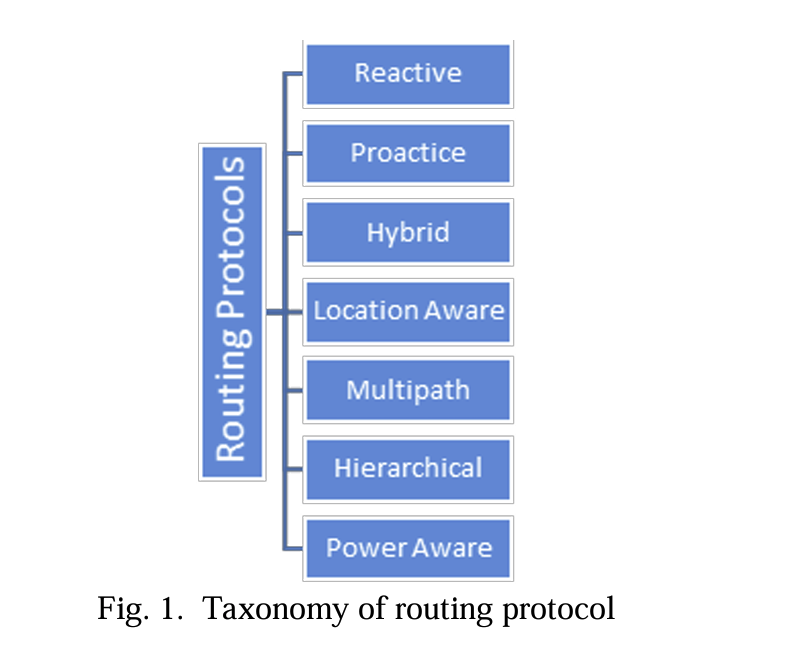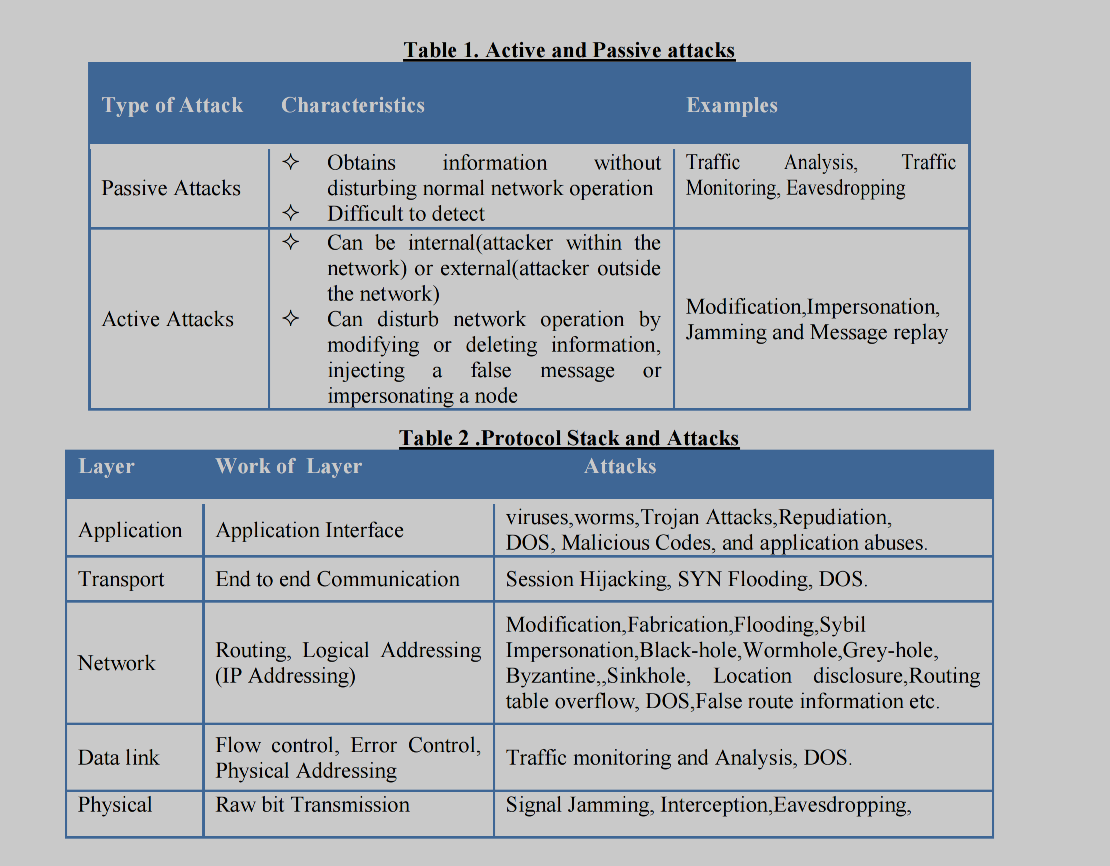5. Wireless Routing Protocols¶
How to run a TraceRoute on Linux, Windows and MACOS 1¶
- Traceroute is a crucial tool in network diagnostics. Together with other Linux commands such as
ping, ip, and netStat(or the newer alternative ss). - Traceroute identifies the path packets take from source to destination. The tool is universally available for Linux, Windows, and macOS.
- traceroute is a command used in network troubleshooting for mapping the path packets travel through the network. The tool aids in the discovery of possible routes of information from source to destination. Additionally, the command also helps calculate the transfer times between points.
- Traceroute acts as a series of ping commands. While ping requests a response from the destination, traceroute gathers the intermediate information as well.
- The command sends out three probes by default for each TTL value and prints out the round-trip time for each packet.
Packet Filter Analysis for ICMP in Wireshark 2¶
- ICMP or Internet Control Message Protocol is Internet or Network layer protocol. In general, it is used to check the reachability of a host or router in a network.
- Ping or traceroute uses ICMP as an inner protocol. Ping uses ICMP echo requests and ICMP echo replies to check whether the destination host is reachable or not.
Routing Algorithm in MANET: A Survey 3¶
- Mobile Ad-hoc Network (MANET):
- It is a network designed in a wireless environment by various mobile nodes to establish communication during mobility.
- It is a collection of mobile nodes, the nodes are dynamically connected in an arbitrary manner.
- Ad-hoc mobile networks are self-configuring networks; there is no preexisting infrastructure.
- There is no designated router on this network and all nodes are able to serve each other as a router and drive the data packets forward.
- Thus each node acts both as a host and a router and each node can communicate to other nodes within its transmission range.
- To communicate with nodes out of its range, a node uses the help from other nodes which play a bridge role in receiving and forwarding messages.
- Use cases: military fields, search and rescue operations, and any remote area where there is no base station for communications.
- Classification of routing protocols:
- The design of an algorithm for static topology networks is simple but when there is no fixed topology then it is a big challenge to design a routing algorithm.
- Broad categories for routing protocols: position-based routing, and topology-based routing.
- The taxonomy of routing protocols is shown below:

- The aim of all of these protocols is to maximize throughput while minimizing packet loss, control overhead, and energy usage.
Reactive or source-initiated routing protocols¶
- The route is created only when the source requests a route to a destination.
- The process is subdivided into route discovery and route maintenance.
- In route discovery network is flooded with route request packets. The route discovery process ends when the initiating node has one route or multiple routes to the destination. Request packets are used in this process.
- A route maintenance procedure maintains the continuity of the route while transferring packets. Error and acknowledgment packets are used in this process.
- Examples of Reactive protocols:
- Dynamic Source Routing (DSR).
- Ad-hoc On-Demand Distance Vector (AODV).
- Temporally Ordered Routing Algorithm (TORA).
- Signal Stability Based Adaptive Routing (SSBR).
- Ant Colony Based Routing Algorithm (ARA).
- Space Content Adaptive Time Routing (SCATR).
- Forwarding Dilemma Game (FDG).
- Distributive Ant Routing (DAR).
Proactive routing protocols (table-driven)¶
- The proactive protocols as their name suggests always maintain the updated information of routes at every node about the source and destination of a packet.
- Also, it propagates this information throughout the network to keep the routing state information up to date.
- The disadvantage of proactive protocols is that they keep information about all the routes which may not be used for transferring so increase the overhead to the network and also increase the cost of transferring the packet.
- Examples of Proactive protocols:
- Destination Sequenced Distance Vector (DSDV).
- Optimized Link State Routing (OLSR).
- Cluster Head Gateway Switch Routing (CGSR).
- Wireless Routing Protocol (WRP).
- Hierarchical Proactive Routing Mechanism for Mobile Ad-hoc Networks (HOLSR).
Hybrid routing protocols¶
- The hybrid routing schemes combine the benefits of reactive and proactive protocols.
- Networks with links that change slowly (more static) use proactive routing.
- While; networks with links that change rapidly (more dynamic) use reactive routing.
- Example of Hybrid protocols:
- Zone Routing Protocol (ZRP).
- Fish Eye State Routing (FSR).
- Landmark Ad-hoc Routing (LANMAR).
- Distributed Dynamic Routing (DDR).
- Hybrid Ant Colony Optimization (HACO).
- Ad-hoc Networking with Swarm Intelligence (ANSI).
Location-aware routing¶
- Location-aware protocols represent the collection of protocols in which the coordinates of the respective nodes are determined by the Global Positioning System (GPS) and the location of every node is known to every other node.
- This class of protocols participates in predictive routing. As the position of a node changes due to mobility, routes from source to destination need to be updated.
- Examples of Location-aware protocols:
- Location Aided Routing (LAR).
- Distance Routing Effect Algorithm for Mobility (DREAM).
- Greedy Perimeter State Routing (GPSR).
- Dynamic Route Maintenance for Geographic Forwarding (DRMGF).
Multipath routing¶
- The multipath algorithm assumes that there may be multiple routes occurring between one source and destination and all are available for data packet transmission; So the shortest or optimal path for packet delivery should be chosen.
- The main advantage of this scheme is that the path with less number of hops or less congested may be chosen in order to deliver the packet in time securely.
- Examples of multipath routing protocols:
- Caching and Multipath Routing Protocol (CHAMP).
- Split Multipath Routing (SMR).
- Secure Multipath Routing (SecMR).
Hierarchical protocols¶
- The main idea behind hierarchical protocols is to reduce the overhead of the networks by clustering the large networks.
- As the size of the network increases, routing table sizes and control packet overhead also increase.
- Hierarchical ad hoc routing clustering techniques to form a tree-like structure of nodes. Nodes at the higher levels of the hierarchy provide special services, improving the scalability and the efficiency of routing.
- Clustering is one of the most popular techniques preferred in routing operations.
- Examples of hierarchical protocols:
- Hierarchical State Routing (HSR).
- Core Extraction Distributed Ad-hoc Routing (CEDAR).
- Hierarchical Landmark Routing (HLR).
Multicast protocols¶
- Real-time applications like video streaming and teleconferencing require the concept of multicasting, where one sender transmits the data to many receivers simultaneously.
- Examples of multicast protocols:
- Dynamic Core Based Multicast Routing (DCMR).
- Energy Efficient Multicast Routing (EEMR).
- Genetic Algorithm for Group Multicast (GAGM).
- Content-Based MultiCasting (CBM).
- Geographic Multicast Routing (GMR).
- Directional Guided Routing (DGR).
- GeoTORA.
Power-aware protocols¶
- In this group of protocols, the routing decision is based on the available power of the nodes other than the number of hops.
- It is observed that generally the shortest path usually consumes less energy.
- Examples of power-aware routing:
- Device and Energy Aware Routing (DEAR).
- Interface Aware Cooperative Routing (IACR).
Comparison of routing protocols¶
- Proactive protocols (table-driven) have extensive research on wired networks as opposed to Reactive protocols (source-initiated, dynamic), but they are not suitable for dynamic routing as marinating the routing tables is a big challenge.
- Reactive protocols (source-initiated, dynamic) have the overhead of route maintenance so the main goal of proactive protocols is to reduce this overhead.
- Most of the traditional protocols consider hop count as the best metric to identify the best packet route.
Secure Routing Protocols for Mobile Adhoc Networks (MANETs) 4¶
- A Mobile Ad-hoc Network is a multi-hop wireless network of mobile nodes that have restricted resources by the conditions of battery life, memory, and processing power.
- Routing network utilizing dedicated nodes to provide support for essential functions like packet routing, forwarding, and networking management, in ad-hoc networks such tasks will be performed by all available nodes.

- With dedicated nodes for network management, these nodes can have special security measures that differ from normal nodes; however, in ad-hoc networks, all nodes are equal and have the same security measures, thus the security of such networks is more challenging as every node can be a potential threat, and balancing performance and security gets more complicated.
- Two main types of attacks:
- Control traffic attacks: affect control packets and routing tables.
- Data traffic attacks: affect the data packets.
Control traffic attacks¶
- Wormhole attack: the attacker tunnels the packets from one part of the network to another part through a high-speed link.
- Hello-Flood attack: the attacker sends a large number of hello packets to the network; The nodes in the network will be busy processing the hello packets and will not be able to process the data packets.
- Bogus attack.
- Rushing attack.
- Sybil attack.
- Blackmail attack.
Data traffic attacks¶
- Black hole attack: a node declines all packets sent to it.
- Cooperative Black Hole Attack: a group of nodes work together to drop packets.
- Grey hole attack: a node drops some packets and forwards others, it may be device-dependent like dropping packets from a specific source or destination; or it may be time-dependent like dropping packets at a specific time or interval.
- Jellyfish attack: a node delays packets from a specific source or destination.
How to Ping an IP on Windows, MACOS, and Linux 5¶
- Ping (Packet Inter-Network Groper) is a computer network utility that allows users to verify and test the existence of a particular IP address and whether it can handle requests.
- It monitors network latency, device availability, and packet loss within a network.
- A ping test works similarly to sonar technology. Upon receiving a data packet, the device with the specified address returns an echo reply or pong, confirming that it is online.
- Ping measures:
- The duration of response or approximate round-trip-times (RTT) – the time between the request being sent to a reply received, measured in milliseconds. It also includes
- The number of bytes received.
- The time it takes to receive a response.
- The time-to-live (TTL): how long a data packet should exist inside a network before being discarded by the router.
References¶
-
Dancuk, M. (2021, August 16). How to run a TraceRoute on Linux, Windows and MACOS. phoenixNAP. https://phoenixnap.com/kb/how-to-run-traceroute ↩
-
Ghosh, B. (2021, September 12). Packet filter analysis for ICMP in Wireshark. LinuxHint. https://linuxhint.com/pack_filter_icmp_wireshark/ ↩
-
Jatwani, R. (2018). Routing algorithm in MANET: A survey. International Journal of Research in Engineering, Science and Management, 1(11), 154-156. https://www.ijresm.com/Vol_1_2018/Vol1_Iss11_November18/IJRESM_V1_I11_39.pdf ↩
-
Kalime, S., & Sagar, K. (2020). A review: Secure routing protocols for mobile ad-hoc networks (Manets). Journal of Critical Reviews, 7(19), 8385-8393. https://www.researchgate.net/publication/349570981_A_REVIEW_SECURE_ROUTING_PROTOCOLS_FOR_MOBILE_ADHOC_NETWORKS_MANETs ↩
-
Noviantika, G. (2023, January 4). How to ping an IP on Windows, MACOS, and Linux. Hostinger Tutorials. https://www.hostinger.com/tutorials/ping-an-ip ↩